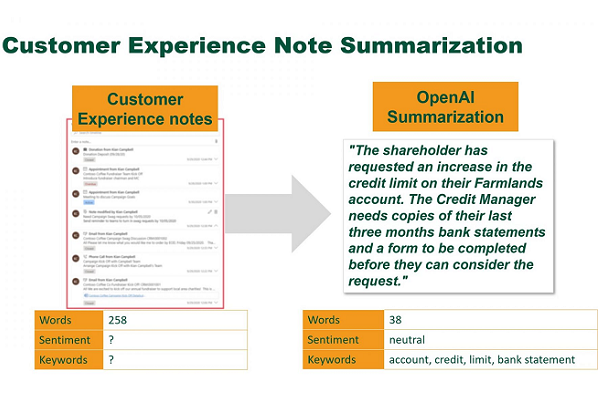Microsoft Enhances Azure OpenAI Service and Widens Access to GPT-3 Models
 Microsoft has introduced improvements to the Azure OpenAI Service built on GPT-3 and other OpenAI language models. The additional linguistic controls and other new features will also be available to more enterprises as the formerly invite-only program is now accepting applications for more use cases.
Microsoft has introduced improvements to the Azure OpenAI Service built on GPT-3 and other OpenAI language models. The additional linguistic controls and other new features will also be available to more enterprises as the formerly invite-only program is now accepting applications for more use cases.
OpenAI Opens Up
Microsoft scored an exclusive licensing deal with OpenAI in 2020 as frenzied interest in the startup’s GPT-3 model accelerated. Last November, the tech giant began inviting certain companies to try the Azure OpenAI Service. That includes GPT-3 augmented and specialized for enterprise needs. The service has shifted to a limited access preview setup, enabling potential customers to apply for a chance to subscribe rather than wait on an invitation.
Successful applicants will see an upgraded version of the service as well. The fine-tuning options needed customers to use their own data before but now can pull from the complete set of OpenAI models. That means brands can start with a partially complete model instead of needing a blank slate to train the AI to perform the way they want. For instance, the ’embedding models’ collection helps with reviewing and searching through large amounts of text or code by finding similarities in the language and learning how to summarize what they say. Microsoft described how New Zealand rural supplies provider Farmlands used Azure OpenAI Service to organize and collate customer interactions and spot important keywords. Farmlands is also leveraging the service to create AI-written product descriptions and a chatbot for customers. Used car retailer CarMax found a different approach to the AI service, employing it to organize 100,000 customer reviews and produce 5,000 short summaries in a few months instead of the 11 years CarMax estimated it would have taken to do so manually.
“One of the most interesting things is the variety of use cases that can be supported off of a single model,” Azure AI corporate vice president Eric Boyd said. “Azure OpenAI Service is really leading the way with these new large language models and giving customers the guarantees and promises in Azure that this is going to be reliable and secure, and their privacy will be protected, as they explore this incredible frontier of what’s possible with these new technologies.”
Codex Calling
Azure OpenAI Service’s other big update incorporates Codex, which instructs the AI in translating plain language instructions. That means developers can describe what they want a program to do and look like, and the AI will generate usable computer code to make it happen. Codex came out last summer for the OpenAI API but now comes wrapped in all of the Azure enhancements. Relatedly, Azure has a new “responsible AI” model built into its system to flag and filter any content the company deems problematic, such as violence, hate, and sexual content. If the AI judges that a user is demonstrating patterns of abuse, it alerts a Microsoft team tasked to set, update, and monitor content filters. They then look further into the issue and decide whether to shut down the program.
Both Codex and the toxic content filter fit with OpenAI’s evolution. OpenAI released a new default GPT-3 natural language model called InstructGPT in January that is supposed to match user intent better and avoid toxic or nonsensical responses. Earlier GPT-3 model could respond to sometimes innocuous queries with inappropriate or random answers, but InstructGPT can understand when the input is a request to complete a task or answer a question, even implicitly. InstructGPT is also less expensive than GPT-3 because of its narrower, if deeper, focus on a smaller set of parameters. Aligning with what users actually want has the added benefit of cutting down on untrue or toxic responses from the AI.
“Our motivation behind Codex is to supplement developers’ work and increase productivity,” OpenAI explained in a blog post. “Codex helps computers to better understand people’s intent, which enables everyone to do more with computers. This is an integral part of our mission to build general-purpose AI that benefits all of humanity.”
Follow @voicebotai Follow @erichschwartz
OpenAI Codex Running Beta for Natural Language to Computer Code API
SK Telecom Unveils New Voice Assistant ‘Character’ Built With GPT-3








